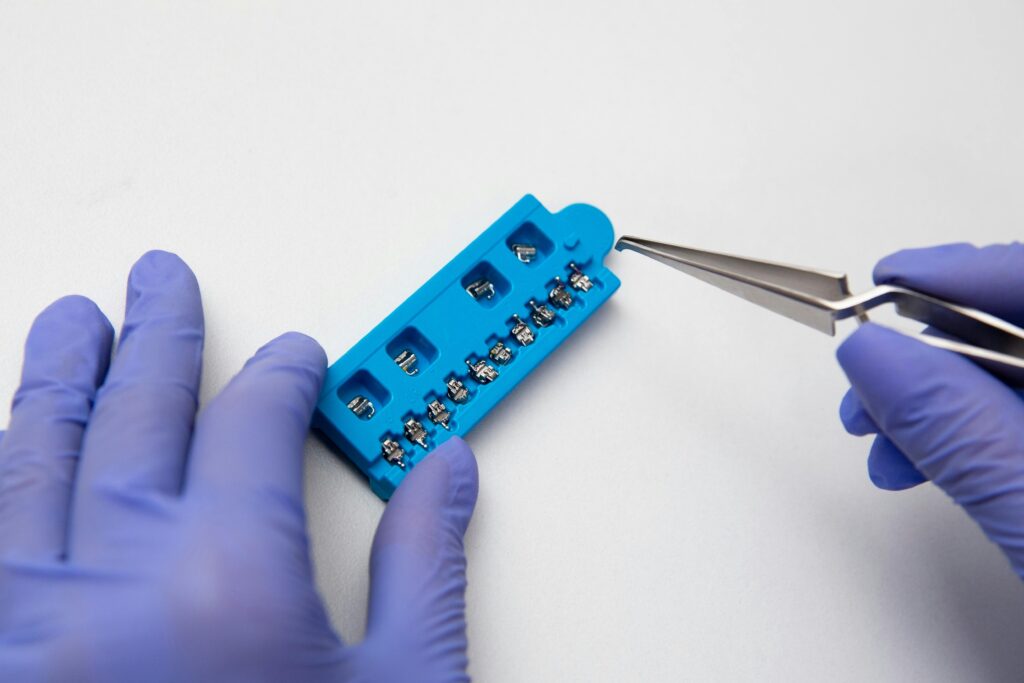Exploring the Pros and Cons of Braces: A Comprehensive Guide

Braces are a common orthodontic treatment used to correct misaligned teeth and bite issues, ultimately enhancing both oral health and aesthetics. While they offer numerous benefits, it’s essential to consider the potential drawbacks as well. In this guide, we’ll explore the pros and cons of braces to help you make an informed decision about orthodontic treatment.
Pros of Braces:
Improved Dental Health: One of the primary benefits of braces is their ability to correct misalignments, crowded teeth, and bite issues. By straightening the teeth and aligning the bite, braces can improve oral hygiene and reduce the risk of dental problems such as cavities, gum disease, and abnormal wear on tooth enamel.
Enhanced Aesthetics: Braces can significantly improve the appearance of the smile by straightening crooked or crowded teeth, closing gaps, and correcting bite abnormalities. A straighter smile can boost self-confidence and improve overall facial aesthetics.
Functional Benefits: In addition to cosmetic improvements, braces can also enhance the function of the teeth and jaws. Properly aligned teeth contribute to better chewing and speech abilities, as well as a reduced risk of jaw pain or temporomandibular joint (TMJ) disorders.
Customization Options: With advancements in orthodontic technology, braces now come in various materials, including traditional metal, ceramic, and clear aligners. Patients have the flexibility to choose the type of braces that best suit their preferences and lifestyle.
Long-Term Results: While orthodontic treatment requires time and patience, the results of braces are typically long-lasting. Following treatment, patients often enjoy a beautifully aligned smile that remains stable with proper maintenance and retention.
Cons of Braces:
Discomfort and Adjustment Period: It’s common for patients to experience discomfort, soreness, and mouth irritation during the initial days or weeks after getting braces. Adjusting to the sensation of braces and the pressure exerted on the teeth can take time.
Dietary Restrictions: Certain foods and snacks may need to be avoided or limited during braces treatment to prevent damage to the braces or wires. Sticky, hard, or chewy foods can bend wires, loosen brackets, or cause other orthodontic issues.
Increased Oral Hygiene Demands: Maintaining proper oral hygiene becomes more challenging with braces, as food particles and plaque can easily accumulate around brackets and wires. Patients must be diligent about brushing, flossing, and using specialized orthodontic tools to clean between teeth and braces.
Aesthetic Concerns: While modern braces offer more discreet options such as ceramic or clear aligners, traditional metal braces are still visible and may affect some patients’ confidence or self-esteem, especially during the initial stages of treatment.
Treatment Duration: Orthodontic treatment with braces typically requires a significant time commitment, ranging from several months to a few years, depending on the complexity of the case and the desired outcomes. Patients must be prepared for the duration of treatment and follow their orthodontist’s recommendations diligently.
Conclusion:
Braces offer numerous benefits in terms of improving dental health, aesthetics, and function. However, they also come with certain challenges and considerations that patients should be aware of before starting treatment. Ultimately, the decision to undergo orthodontic treatment with braces should be made in consultation with a qualified orthodontist who can assess individual needs, preferences, and treatment goals. With proper care and patience, braces can help achieve a straighter, healthier smile that lasts a lifetime.
